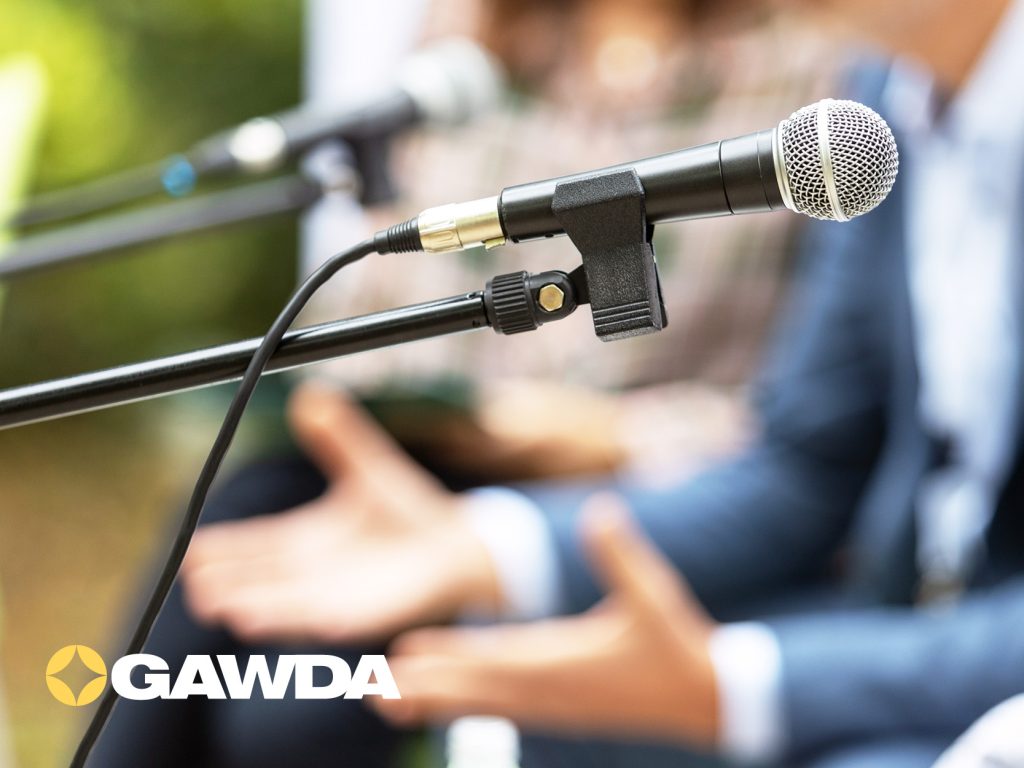Thoughts Ahead of the SMC
By Tom Badstubner, Marilyn Dempsey, Mike Dodd, Rick Schweitzer, and Steve Guglielmo
The GAWDA Consultant Program is a GAWDA member benefit that is included as part of your member dues to the association. It is consistently rated as one of the most valuable member benefits that GAWDA provides. Between the four of them, GAWDA’s consultants bring more than 100 years of industry-specific experience to the association.
Thank you to Tom Badstubner, GAWDA’s FDA and Medical Gases Consultant, Marilyn Dempsey, DHS, EPA and OSHA Consultant, Mike Dodd, DOT Consultant, and Rick Schweitzer, Government Affairs and Human Resources Consultant, for lending their time and expertise to discuss these important topics. The following is a lightly edited transcript of that conversation.
WGT: You will be hosting a roundtable discussion at this year’s SMC in Philadelphia. Is there anything specific you will be addressing or any particular state of mind you want attendees to come into that event in?
Michael Dodd: The event at the SMC is on the heels of our very successful Professional Compliance Seminar in March at Chart Industries. As far as the SMC goes, I will be filling in for Rick, because he is not going to be able to make it, unfortunately. So, he’ll send me an update on what is coming down the pipeline. And I will try to make that as simple as I can for the attendees. But, really, we’re expecting it to be more of a Q&A. And, of course, we always come prepared with things to talk about.
So, I’ll be talking about the DOT items that are going on. We’ve been having lots of audits. And I’ll have a few key things to discuss that I’ve heard from my contacts. There have been a lot of things going on with special permits, so we’ll talk about that a little bit. And I’ll remind people that they can save a lot of money if they sign up for two or three special ones.
Rick Schweitzer: Marilyn and I had an interesting OSHA issue come up involving a member company regarding nesting of cylinders. OSHA came in for an inspection regarding some other incident and while the inspector was there, the inspector noticed that the cylinders were free-standing. Sort of nesting but really not meeting the three points of contact that is legally required. OSHA had taken pictures of the scene and it was pretty clear that the three points of contact standard was not being met in order to be properly nested.
It’s easy to see how that happens, as you’re moving cylinders in and out of a filling facility. But I think this is a good time to remind companies that these requirements do apply and they’re there for a reason. Unless you chain the cylinders, you really do need to nest them properly so that they don’t fall and cause injury. And the company did end up paying a fine as a result of the violation.
Mike: Do you remember how much the fine was?
Rick: $6,000. I think they wanted originally $10,000 but we offered them less and they did accept it. The fact that the company responded immediately and made appropriate changes to its procedures was instrumental in getting OSHA to accept a lower penalty.
Mike: Those numbers are important for members to know.
Rick: And those costs are on top of all the administrative time that goes into the case, and the cost of bringing me on to help them respond. And it goes on your record as a prior violation. Should there be another, subsequent violation, it will be seen as an aggravating factor, and it will increase the value of any future violations. Or, at the very least, it will discourage the agency from reducing the penalty based on your remedial steps.
OSHA Penalties
Below are the maximum penalty amounts, with the annual adjustment for inflation,
that may be assessed after Jan. 15, 2023. (See OSHA Memo, Dec. 20, 2022).
TYPE OF VIOLATION
PENALTY
Serious
Other-Than-Serious
Posting Requirements
$15, 625 per violation
Failure to Abate
$15, 625 per day beyond the abatement date
Willful or Repeated
$156, 259 per violation
WGT: Is this violation something that is out of the ordinary, or do you suspect many members would have this if you went out and looked at their warehouses?
Rick: I think it’s an easy thing to overlook.
Mike: And it is highly dependent upon the inspector. A lot of them may see it, but not write it up or may mention it but not write it up.
Marilyn Dempsey: Nesting is the most overlooked action that I’ve seen in my travels. People view straight rows of cylinders as easier to access…just line them up like little soldiers, then you have your different blends right there for you to pull them out of the line. But that doesn’t pass muster. You must have three points of contact or secure the cylinders.
As far as the fine goes, OSHA revised their fine schedule this past January (2023). They have base fines, maximum fines. And OSHA has a fine reduction schedule that is based on the number of employees, severity, good faith efforts of the employer and history of violations.
WGT: What are the safety risks for having them improperly nested?
Marilyn: The largest risk is for a cylinder to fall on someone. Or, when you don’t have the integrity of the nest/three sides touching, then someone could bump into a cylinder and create a cascade of falling cylinders.
WGT: Are there any special areas of emphasis that inspectors are looking for this year? Or, if not a defined special emphasis, are there any violations you’re seeing more of this year compared to previous years?
Marilyn: They still have the national emphasis program (NEP) on heat related illness and other Regional Emphasis programs. The number of inspections fell off in 2020, during COVID, but in 2021 the number of inspections increased, and I think, like the rest of society, OSHA is less afraid to be out and about. I believe we can expect the number of inspections to continue to increase.
WGT: You mentioned last year that all of the federal agencies had their “Help Wanted” sign out. Would you say that the number of inspections going up is a direct result of them hiring more inspectors?
Marilyn: I can’t say that, for sure. The number of inspections are not as great as 2016-2017. However, every single agency still has that “Help Wanted” sign. And, to borrow something that I discussed at the seminar, OSHA was signed into existence in 1970 by President Nixon to help businesses stay safe, mainly through education. That mission appears to have changed, now. OSHA is seen as an enforcement agency. OSHA is under the Department of Labor (DOL) and the DOL appears to have a new mission. I say this because on their home page is “Do You Want to Form a Union?” It has gone past the point of helping workers stay safe and it has gotten more into the union state of mind and a police state for businesses. For example, the NEP on Heat Related Illness, inspectors can drive by a business not on their list, stop and inspect if they think there may be a heat-related issue at the business.
Tom: We have seen several recent audits where the FDA has sent an experienced inspector and one or two inspectors-in-training. These training inspections tend to be more thorough than prior inspections.
WGT: Rick, you made the point in the Q1 Issue that, with a divided Congress, you didn’t expect to see any impactful new legislation. But you also made the point that changes within the agencies could have some impact. Is this is an example of that?
Rick: Yes, I think so. The emphasis from the administration is on unionization of the work force, decarbonization of the economy, and environmental justice. Those three themes are in everything that every federal agency does. And we’re seeing it already.
WGT: You also mentioned the 45Q Tax Credit in Q1. I’ve since spoken with other members about that. Can you explain what that is and how it will impact GAWDA members?
Rick: Well, it’s a tax credit for the acquisition of new, essentially electric vehicles. The administration is using both the carrot and the stick to electrify the transportation fleet, including private, commercial fleets like GAWDA members’ delivery trucks. But, on the carrot side, they’re giving you a tax credit through the IRS for the purchase or lease of new electric vehicles. And, I believe you can get up to $40,000 per unit for a new vehicle over 14,000 pounds.
On the other hand, the EPA has come out with new emissions requirements that go into effect with the 2027 model year that will require diesel engines to meet an extremely stringent new standard for NOX emissions that is going to add about $42,000 to the cost of those vehicles. So, if you want to stick with diesel, you’ll be stuck with additional costs based on the EPA regulations, but if you want to go electric, the government is going to put money into your pocket to do that. And the cost of an electric vehicle is much higher than the cost of a comparable diesel vehicle, which is one of the reasons why they feel that it’s necessary to give you this credit. But the maintenance costs on an electric vehicle are a lot less. You don’t have oil changes, you don’t have a lot of the transmission problems that you do with a diesel vehicle.
The downside, of course, is that if the electricity goes out, you’re going to be stuck with a lot of trucks that you’ll need to recharge. As somebody who just want for three days without power in my house due to a storm, I’m sympathetic to that argument.
WGT: Getting back to the SMC, the Government Affairs and Safety Committee will be meeting together. Are there any particular things that you’re working on or topics that you’ll be discussing?
Tom Badstubner: The safety committee, in the last six months or so, has focused on redeveloping the documents with infographics and making them easier to implement and understand. And it makes training easier to conduct, as well.
Rick: The Federal Trade Commission has a proposed rule that would ban the use of non-compete agreements. There would be some exceptions for acquisitions of companies when the president of the acquired company has more than a 25% stake in the acquired entity. But, in general, it would be a complete ban on the use of non-competes. And, understandably, GAWDA members are all over the map on their thoughts on this. Some companies use them aggressively, as employee retention plans. Others don’t like them at all and even litigate against other companies because they want to be able to attract top talent even if it is from a competitor.
So, we’re in the process of trying to figure out what, if anything, we can comment on to the FTC to try to give them some information about this. There’s also the basic question about whether or not the agency even has the authority to do this in the first place. And that’s an issue that will probably be resolved in the courts.
The other thing that I see eventually having a significant impact on this industry is from the Federal Motor Carrier Safety Administration on revising their safety measurement system. The FMCSA has this standard of metrics that it uses to identify what they call “at risk” carriers. These are carriers that are “at risk” for either more crashes or more severe crashes than the normal carrier. And it looks at your compliance record and your accident history and it looks at your speeding violations, your HAZMAT violations, etc. to try to develop a score that will then be used by the agency to identify carriers for intervention. The intervention could be an enforcement action or lots of other different types of ways to bring that carrier back into compliance.
That was the initial idea behind it. But the FMCSA, a number of years ago, started publishing those scores online. So, customers started using those scores to rate their trucking companies and their distributors to see whether or not they had safe trucking operations. Insurance companies use those scores to rate your insurance premiums. And plaintiffs lawyers, if you were involved in an accident, the first thing they would do would be to look at those scores. There were a whole host of uses for these scores that were really not what the agency intended.
And Congress, back in 2015, told the National Academy of Sciences to do a study on this to see if there was some other way to identify at-risk carriers for compliance intervention. And the NAS came out with a report that said companies should adopt “item response theory” to replace the current system for identifying at risk carriers. Unfortunately, it’s an incredibly convoluted mathematical formula for looking at all of your management decisions to try to determine your future potential for being in a crash. It’s incomprehensible. I don’t think anybody at DOT or NAS even understands it.
Finally, the FMCSA on February 15th came out said they weren’t going to adopt this IRT. But it did say that it is going to go back and look at its SMS metrics and adjust those to see if they can come up with a better program. So, it will consolidate some of their violations. And they won’t call them basics anymore, the categories are going to be called safety categories. But they’re going to reconfigure what they were doing before and see if they can improve them at all. And those comments are due on May 16th.
Mike: At the safety committee meeting, we typically have gotten together once per year. And we’ve used it for a couple of things. It helps our members to see face-to-face. We’ve been doing a lot more of the GoToMeetings so we can see each other through the screens, but it’s not quite the same as face-to-face. We use that time basically to set the agenda for the coming year. We talk about the previous year and what we’ve accomplished.
But, honestly, it’s also a reward. Because all these people are volunteers. And they put their time, their money, and their effort into attending those calls. And their companies send them to this meeting. And one of the things that we do is we do a dinner one evening and that really goes over with the volunteers. It builds the camaraderie, and it also builds those relationships. And it’s a good team building thing.
So, the meeting that we’ll do at the SMC is really a very positive thing. And it’s nice that we get the Government Affairs Committee in with the Safety Committee as well because there is a lot of overlap. And it ends up being a very good time.
Tom: For the Safety Committee, Jim Herring began a subcommittee concept a couple of years ago. The subcommittees have been very productive in developing and reviewing sample safety practices.
WGT: Any last thoughts you want to leave readers with before we see them in Philadelphia?
Mike: I’m looking very much forward to seeing people in-person. We really enjoy seeing members at the Contact Booth and meeting them in the hallways and out at the breaks. For us consultants, it’s a chance to meet face-to-face with all those who we’re doing emails and phone calls with. It’s like our little reward as well. And a lot of them have become very good friends over the years.
Rick: And it attaches a face to a name. I talk to people on the phone or exchange emails with them, but it makes a huge difference for them to come up and shake hands and see the other person and talk to them for a few minutes about the company. It helps us understand their situation for the next call.







